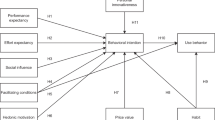Abstract
Behavior analysis has been at the forefront of instructional design for many years. However, this leadership position is rapidly eroding as teachers, trainers and other educators insist that behavioral instruction is good only for meeting simplistic educational goals. I argue that in order for behavior analysis to continue to influence the field of instructional design, behavior analysts need to help people develop instructional programs that use advanced interactive computer systems and that are based on all the components of behavioral instruction. Therefore, this paper suggests the following strategy. First, it teaches people to select authoring systems that will enable them to design interactive computer programs. Second, in order to improve current authoring systems it provides a set of prompts that integrate the features of behavioral instruction. I claim that the integration of these prompts with an advanced authoring system will facilitate the development of complex, conceptual learning programs and minimize current criticisms of behavioral instruction.
Similar content being viewed by others
References
Anderson, R. C., & Faust, G. W. (1973). Educational psychology. New York: Harper & Row Publishers.
Becker, W. C., & Engelmann, S. E. (1978). Analysis of achievement data on six cohorts of low income children from 20 school districts in the University of Oregon Direct Instruction Follow Through Model Technical Report 78-1. Eugene, OR: University of Oregon Follow Through Project.
Becker, W. C., Edelmann, S. E., & Thomas, D. R. (1975). Teaching 2: Cognitive learning and instruction. Palo Alto: Science Research Associates.
Bloom, B. S., Englehart, M. D., Furst, E. J., Hill, W. H., & Kratwohl, D. R. (1956). A taxonomy of educational objectives: Handbook I: The cognitive domain. New York: MacKay, Inc.
Catania, A. C. (1968). Contemporary research in operant behavior. Glenview, IL: Scott, Foresman and Co.
Cayton, T. G., & Madsen, C. H. (1975). A comparison of three methods of teaching child psychology using a progressive multiple baseline achievement test. In J. M. Johnston (Ed.), Research and technology in college and university teaching (pp. 205–214). Gainesville, FL: University of Florida.
Churchman, C. W. (1968). The systems approach. New York: Dell Publishing, Inc.
Deitz, S. M. (1982). Defining applied behavior analysis: An historical analogy. The Behavioral Analyst, 5, 53–64.
Engelmann, S. E. (1969). Conceptual learning. San Rafael, CA: Dimensions Publishing Co.
Engelmann, S. E., & Carnine, D. (1982). Theory of instruction: Principles and applications. New York: Irvington Pub., Inc.
Gagné, R. M. (1965). The conditions of learning. New York: Holt, Rinehart, and Winston.
Gagné, R. M., Wager, W., & Rajas, A. (1981). Planning and authoring computer-assisted instructional lessons. Educational Technology, 21, 17–21.
Gilbert, T. J. (1978). Human competence: Engineering worthy performance. New York: McGraw-Hill.
Glaser, R. (1962). Psychology and instructional technology. In R. Glaser (Ed.), Training research and education (pp. 1–30). Pittsburgh: Université Pittsburgh Press.
Holland, J. G., Solomon, C., Doran, J., & Frezza, D. A. (1976). The analysis of behavior in planning instruction. Reading, MA: Addison-Wesley Publishing Co.
Howard, J., & Johnson, K. R. (1983, May). An analysis of PSI, DI, CAI and precision teaching. Paper presented at the meeting of the Association for Behavior Analysis. Milwaukee, WI.
Johnson, K. R., & Chase, P. N. (1981). Behavior analysis in instructional design: A functional typology of verbal tasks. The Behavior Analyst, 4, 103–122.
Johnson, K. R., & Ruskin, R. (1977). Behavioral instruction: An evaluative review. Washington, D.C.: American Psychological Association.
Johnston, J. M., & Pennypacker, H. S. (1980). Strategies and tactics of human behavioral research. Hillsdale, NY: LEA, Inc.
Kearsley, G. (1982). Authoring systems in computer based education. Communications of the ACM, 25, 429–437.
Keller, F. S. (1968). “Goodbye teacher ….” Journal of Applied Behavior Analysis, 1, 79–89.
Keller, F. S., & Schoenfeld, W. (1950). Principles of psychology. Englewood Cliffs, NJ: Prentice-Hall, Inc.
Lewis, L. H. (1984). Evaluators and designers: Another aspect of computer literacy. Computers in Schools, 1, 59–69.
Lindsley, O. R. (1964). Direct measurement and prothesis in retarded children. Journal of Education, 147, 62–81.
Mager, R. F. (1962). Preparing instructional objectives. Belmont, CA: Fearon.
Mager, R. F. (1972). Goal analysis. Palo Alto: Fearon.
Markle, S. M. (1967). Empirical testing of programs. In P. C. Lange (Ed.), Programmed instruction (pp. 104–138). Chicago: University of Chicago Press.
Miller, L. K., & Weaver, F. H. (1972). A multiple baseline achievement test. In G. Semb (Ed.), Behavior analysis and education (pp. 393–399). Lawrence, KS: University of Kansas Follow Through Project.
Otte, R. B. (1984). Courseware for the 80’s. T.H.E. Journal, 12, 89–91.
Royer, J. M. (1979). Theories of transfer of learning. Educational Psychologist, 14, 53–69.
Royer, J. M., & Feldman, R. S. (1984). Educational psychology: Applications and theory. New York: Random House, Inc.
Scandura, J. M. (1981). Microcomputer systems for authoring, diagnosis and instruction in rule-based subject matter. Educational Technology, 21, 13–19.
Schuster, J. P. (1984). Whole-brain training: Ticket to the information age? Training, 21, 52–59.
Sidman, M. (1960). Tactics of scientific research. New York: Basic Books, Inc.
Skinner, B. F. (1957). Verbal behavior. Englewood Cliffs, NJ: Prentice-Hall, Inc.
Skinner, B. F. (1968). The technology of teaching. Englewood Cliffs, NJ: Prentice-Hall, Inc.
Sulzer-Azaroff, B., & Mayer, R. (1977). Applying behavior analysis procedures with children and youth. New York: Holt, Rinehart & Winston, Inc.
Vargas, J. S. (1977). Behavioral psychology for teachers. New York: Harper and Row.
White, O. R., & Haring, N. G. (1980). Exceptional Teaching (2nd ed.), Columbus, OH: Charles E. Merrill Co.
Williams, R. G. (1977). A behavioral typology of educational objectives for the cognitive domain. Educational Technology, 17, 39–46.
Zemke, R. (1984). Evaluating computer-assisted instruction: The good, the bad and why. Training, 21, 22–47.
Author information
Authors and Affiliations
Rights and permissions
About this article
Cite this article
Chase, P.N. Designing Courseware: Prompts from Behavioral Instruction. BEHAV ANALYST 8, 65–76 (1985). https://doi.org/10.1007/BF03391913
Published:
Issue Date:
DOI: https://doi.org/10.1007/BF03391913




